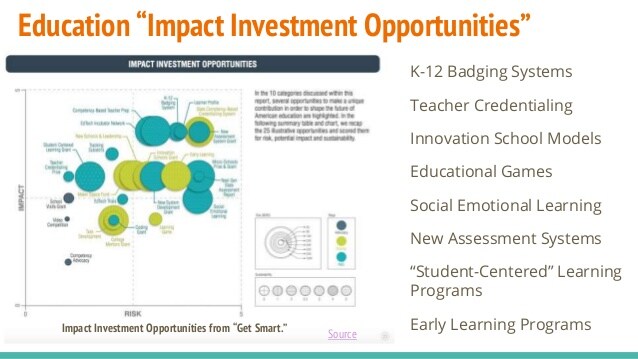Impact of investment in education on learning
[ad_1]
Compared to other countries, especially those in the region, Pakistan sort of ranks at the bottom of the list in terms of educational indicators such as expected years of schooling, average years of schooling and inequality in education. education.
The incumbent federal government is obviously fully aware of the national education crisis, as more than 22.84 million children were still out of school and up to 41% of fifth graders could not even attend school. not read simple stories in basic languages.
According to the Pakistan Living Standards and Society Measurement Survey (PSLM) 2018-19, the literacy rate in the country stagnated at around 60%, the urban literacy rate at 74% and the rural literacy rate at 51%. Literacy in Punjab province is slightly higher at 64 percent compared to Sindh and Khyber Pukhtoonkhwa (including merged districts) at 57 percent and 55 percent respectively while this rate was even lower at 40 percent one hundred in Balochistan, the largest and least populated province in the country. the country.
In addition, the literacy rate of the male population was 71 percent while that of women was considerably lower at 49 percent. According to figures available from official sources, school attendance in Pakistan is estimated to be around 60%, while the gross enrollment rate (GER) at the primary level was 87% and the net enrollment rate (NER) was 66%. . Likewise, the mid-level TBS and TNS were 63% and 38% respectively, while the matrix-level TBS and TNS figures were 57% and 27% respectively. The literacy gender parity index (GPI) was only 0.69 overall, while at the primary and secondary levels the figures were 0.92 and 0.89 respectively.
One of the main concerns of relevant authorities at the federal and provincial levels was how to mitigate the exacerbated learning loss with more than 50 million learners affected due to the COVID-19 pandemic in fiscal year 2020 -21. This was accompanied by an increased risk of an increase in the number of out-of-school children, widening gender disparities and worsening learning poverty.
The Federal Ministry of Education and Vocational Training, which had taken the lead in several initiatives to improve the quality and access to education as well as to mitigate education losses during the COVID pandemic- 19, was allocated an amount of Rs Rs 4.7 billion. The ministry also launched the ASPIRE program initiative to effectively address educational inequalities at the inter-provincial and inter-district levels for backward areas throughout Pakistan.
Concerted efforts as such were badly needed to focus on reducing the huge number of out-of-school children (22.8 million, exacerbated to 50 million due to COVID-19). Provincial governments are required to make serious and concerted efforts to strengthen training modules for both teachers and education officials to face similar challenges in the future. Improving gender parity and the literacy rate were obviously the areas of particular interest in the education sector.
As for measures taken at the federal level to improve the entire education sector in the country, no less than 23 projects have been included in the Public Sector Development Program (PSDP) 2020-21, including 20 projects underway. and 3 new projects which were initiated by the Federal Ministry of Education and Vocational Training. These projects aimed to introduce a uniform curriculum, capacity building of teachers and principals, recruitment of teachers, creation, renovation and modernization of schools and colleges, improvement of disparities between gender, the education voucher system, the improvement of the education assessment system and the Knowledge Economy Initiative.
The federal government was apparently determined to strengthen the education system and invest in human capital development. Projects initiated by the incumbent federal government for human capital included Tele School for Grades 1-12; National Education Action Plan for COVID-19; Establishment of the Secretariat of the National Council for Study Programs; Balochistan Human Capital Investment Project; Khyber Pukhtoonkhwa Capital Investment Project; Punjab Human Capital Investment Project, and; Improved early learning of Sindh through classroom transformation.
As for the measures initiated or envisaged by the federal and provincial governments within the framework of the 2021-2022 PSDP, the federal government gave the necessary priority to strengthening the basic and college education system. To this end, 24 development projects including 20 ongoing projects for basic and college education with an allocation of Rs 4,873.74 million have been registered in the PSDP for the current fiscal year.
As part of the PSDP 2021-22, the Federal Ministry of Education and Vocational Training, which had taken the initiative of several initiatives aimed at improving the quality and access to education as well as reducing the education losses during the COVID-19 pandemic, was allocated an amount of Rs Rs. 4.7 billion. The ministry also launched the ASPIRE program initiative to effectively address educational inequalities at the inter-provincial and inter-district levels for backward areas throughout Pakistan. A substantial amount of Rs 4 billion was being disbursed to reduce imbalances in the quality and access to education.
Two major programs, namely Response Recovery and Resilience Project and Pandemic Response Effectiveness in Pakistan, were also launched to address disparities, disruption of educational continuity and learning losses due to the continued prevalence of pandemic. Interactive and digital content for technology media was also being created, updated, contextualized and disseminated through television, radio and mainstream educational technology platforms. Likewise, other programs included providing missing basic education facilities, establishing or upgrading schools and colleges for boys and girls, knowledge economy initiatives, teacher training institutes. and others.
The Secretariat of the National Program Council has also been set up to ensure effective coordination between the federating units in the development and revision of the single national program from pre-1 to 12, teacher training modules, standards for quality education and the national curriculum framework. Updating the national curriculum by adopting new knowledge relevant to the needs of the 21st century and focusing on creative and critical thinking, instead of rote learning, was also the federal government’s priority agenda in square.
[ad_2]


Comments are closed.